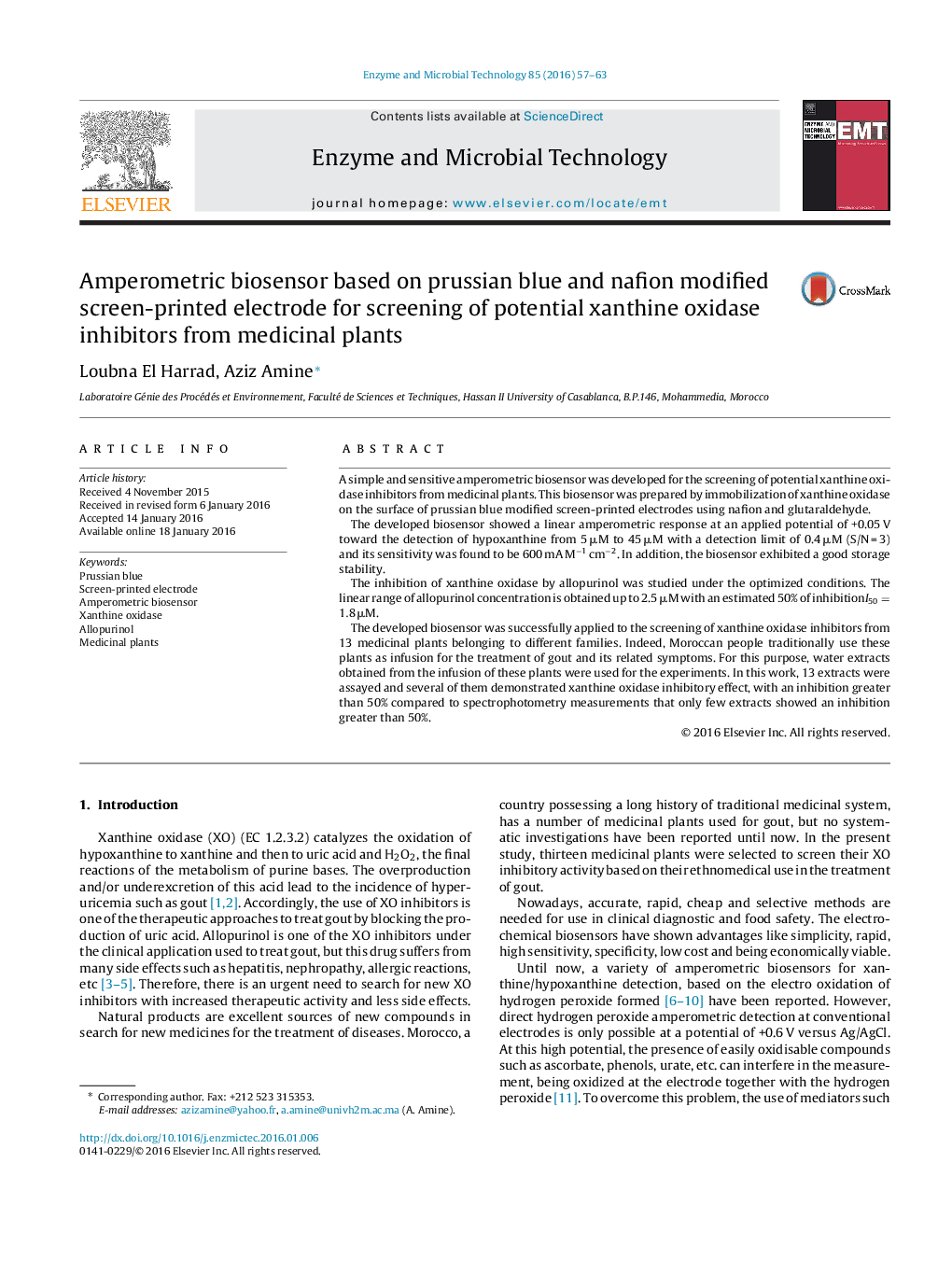| کد مقاله | کد نشریه | سال انتشار | مقاله انگلیسی | نسخه تمام متن |
|---|---|---|---|---|
| 16872 | 42619 | 2016 | 7 صفحه PDF | دانلود رایگان |

• The development of a simple and sensitive amperometric biosensor for the screening of potential xanthine oxidase inhibitors from medicinal plants.
• Comparison of the biosensor method with the standard spectrophotometric method.
• Application of the proposed inhibitive biosensor for screening of plant extract as new drugs.
A simple and sensitive amperometric biosensor was developed for the screening of potential xanthine oxidase inhibitors from medicinal plants. This biosensor was prepared by immobilization of xanthine oxidase on the surface of prussian blue modified screen-printed electrodes using nafion and glutaraldehyde.The developed biosensor showed a linear amperometric response at an applied potential of +0.05 V toward the detection of hypoxanthine from 5 μM to 45 μM with a detection limit of 0.4 μM (S/N = 3) and its sensitivity was found to be 600 mA M−1 cm−2. In addition, the biosensor exhibited a good storage stability.The inhibition of xanthine oxidase by allopurinol was studied under the optimized conditions. The linear range of allopurinol concentration is obtained up to 2.5 μM with an estimated 50% of inhibitionI50=1.8μMI50=1.8μM.The developed biosensor was successfully applied to the screening of xanthine oxidase inhibitors from 13 medicinal plants belonging to different families. Indeed, Moroccan people traditionally use these plants as infusion for the treatment of gout and its related symptoms. For this purpose, water extracts obtained from the infusion of these plants were used for the experiments. In this work, 13 extracts were assayed and several of them demonstrated xanthine oxidase inhibitory effect, with an inhibition greater than 50% compared to spectrophotometry measurements that only few extracts showed an inhibition greater than 50%.
Figure optionsDownload as PowerPoint slide
Journal: Enzyme and Microbial Technology - Volume 85, April 2016, Pages 57–63